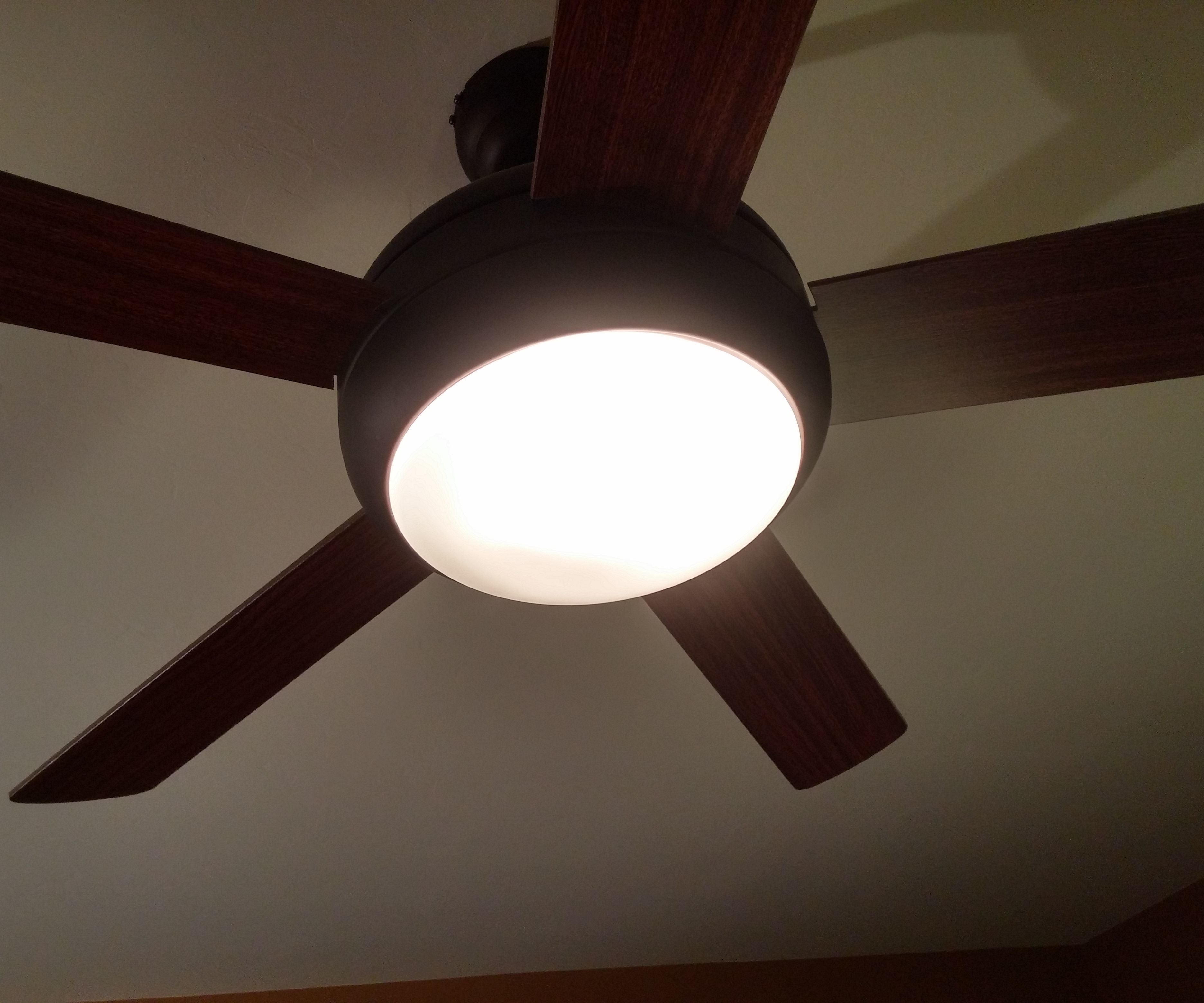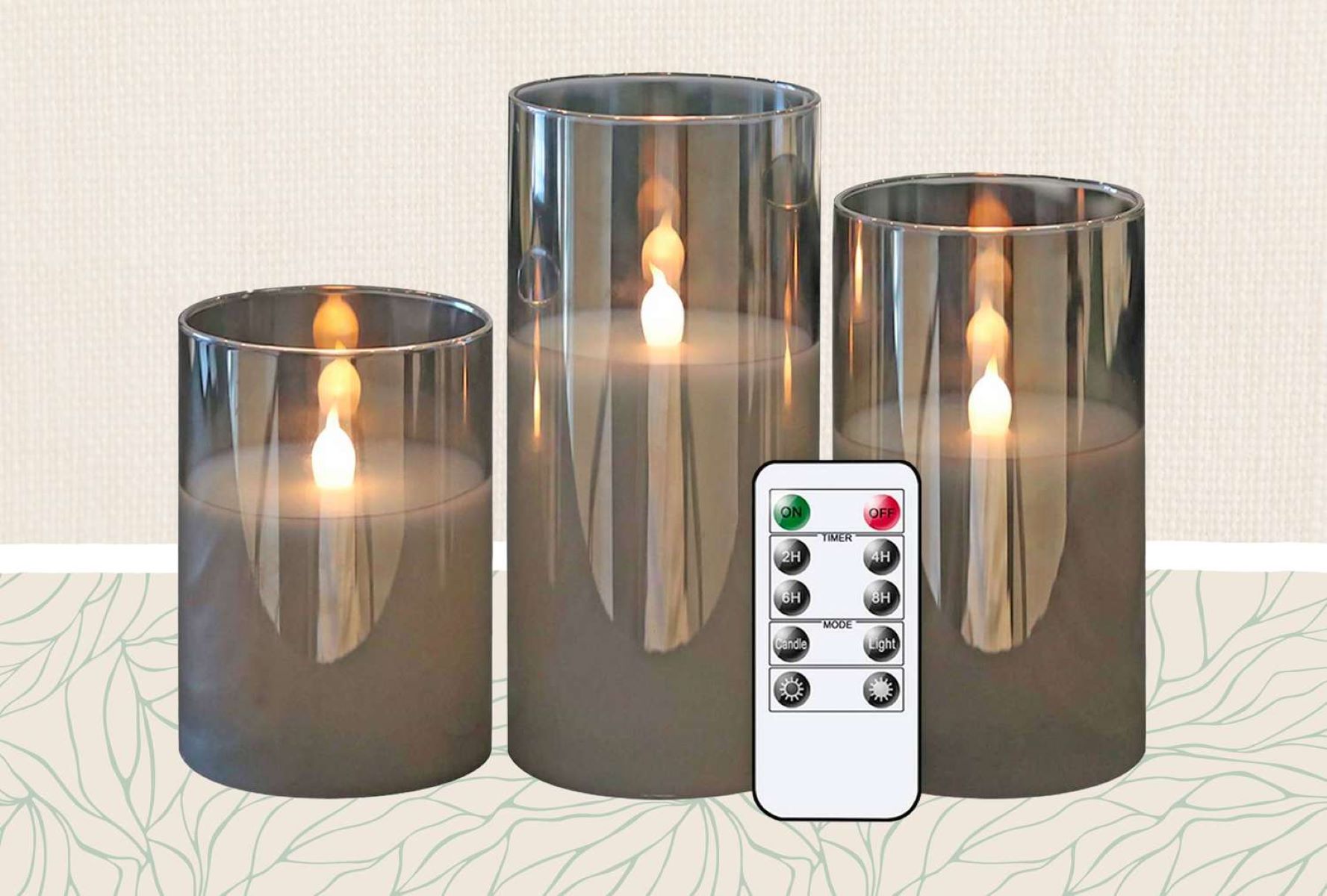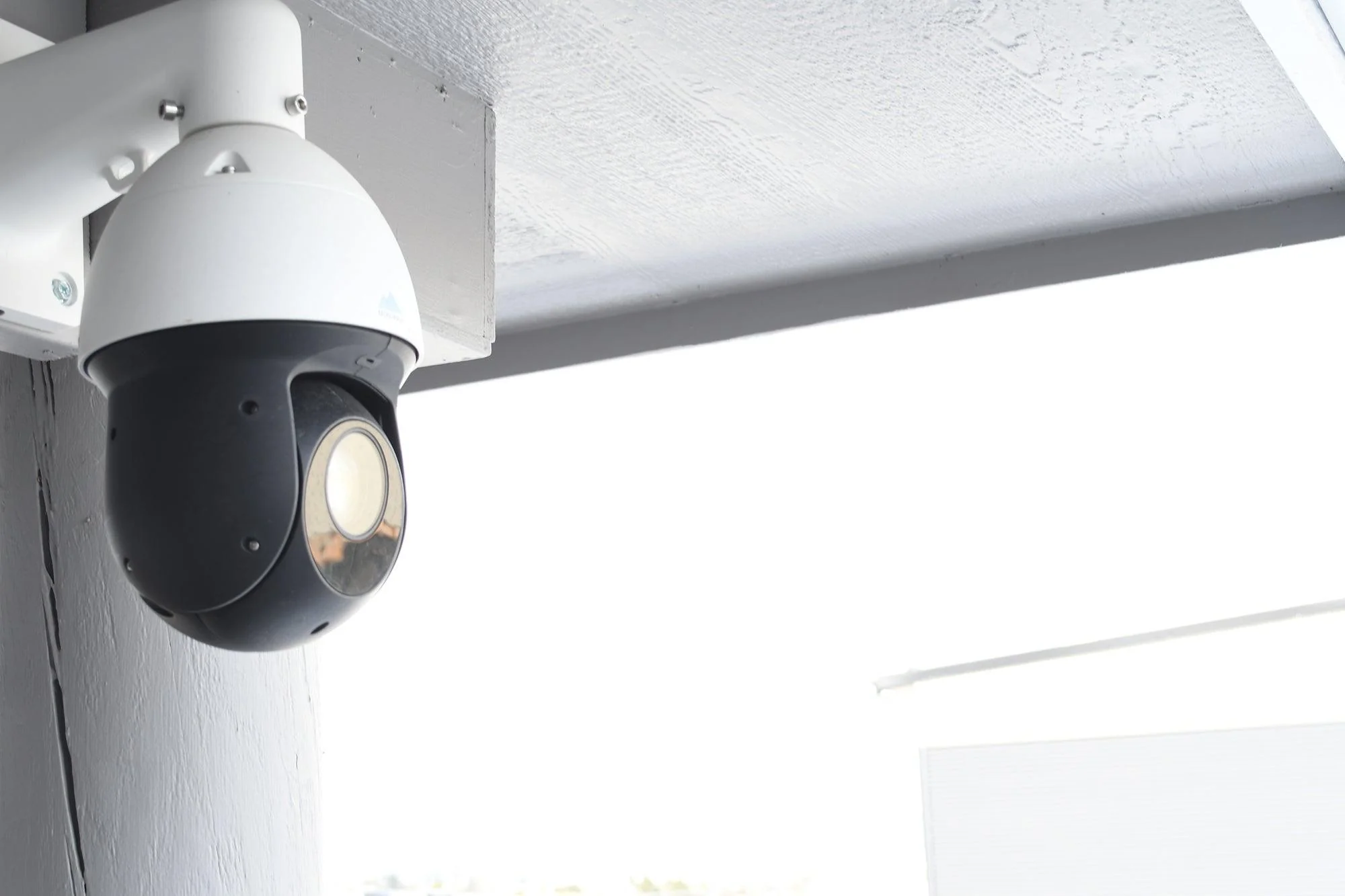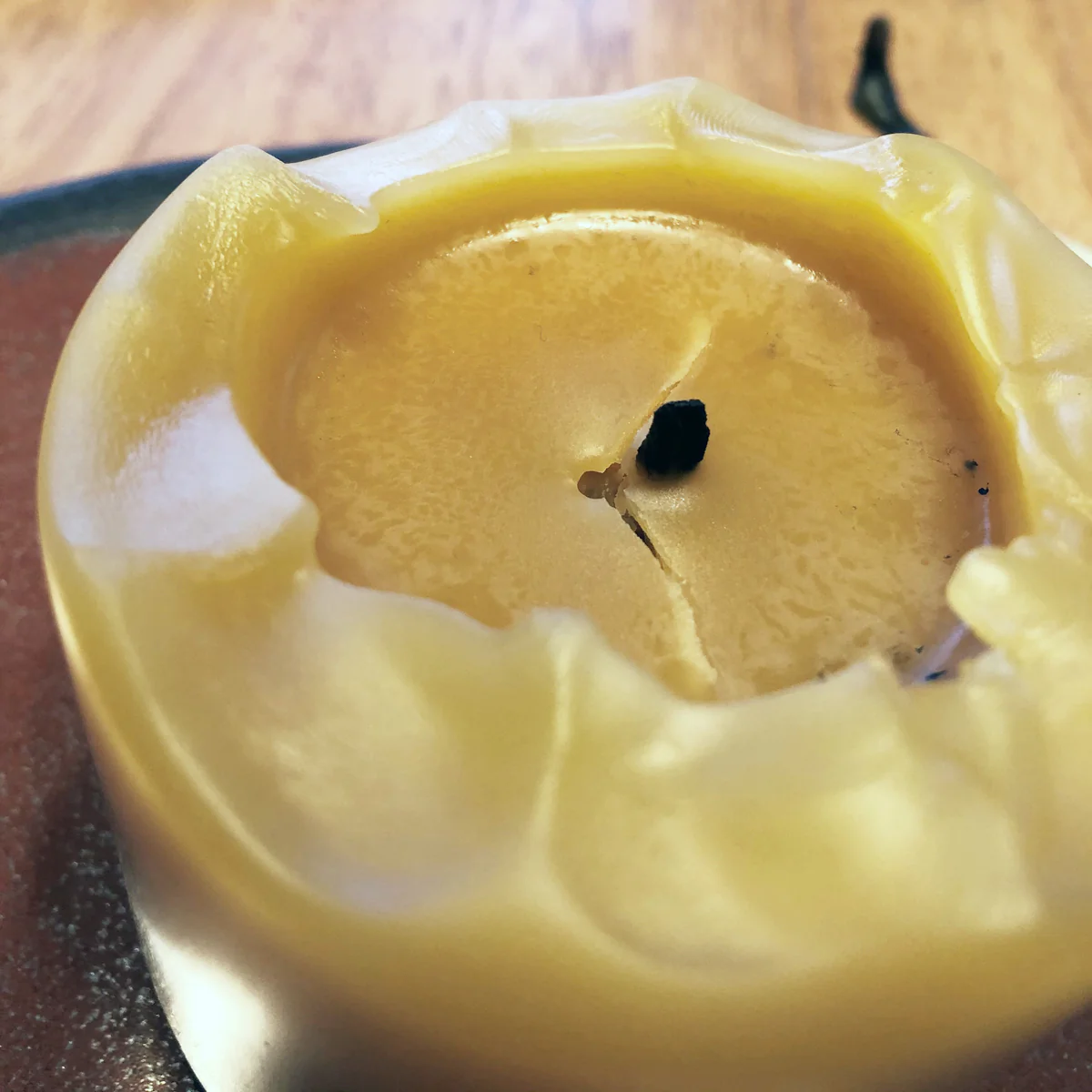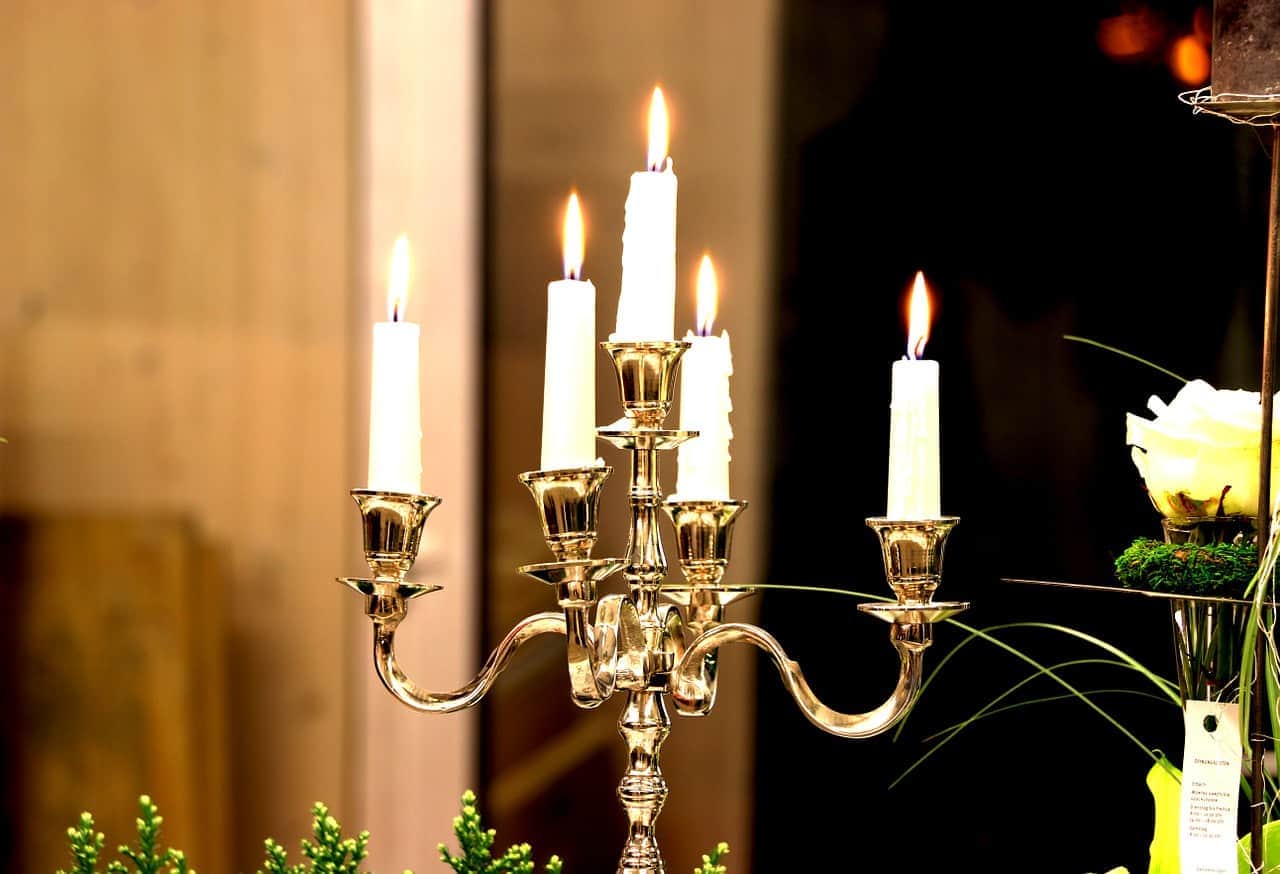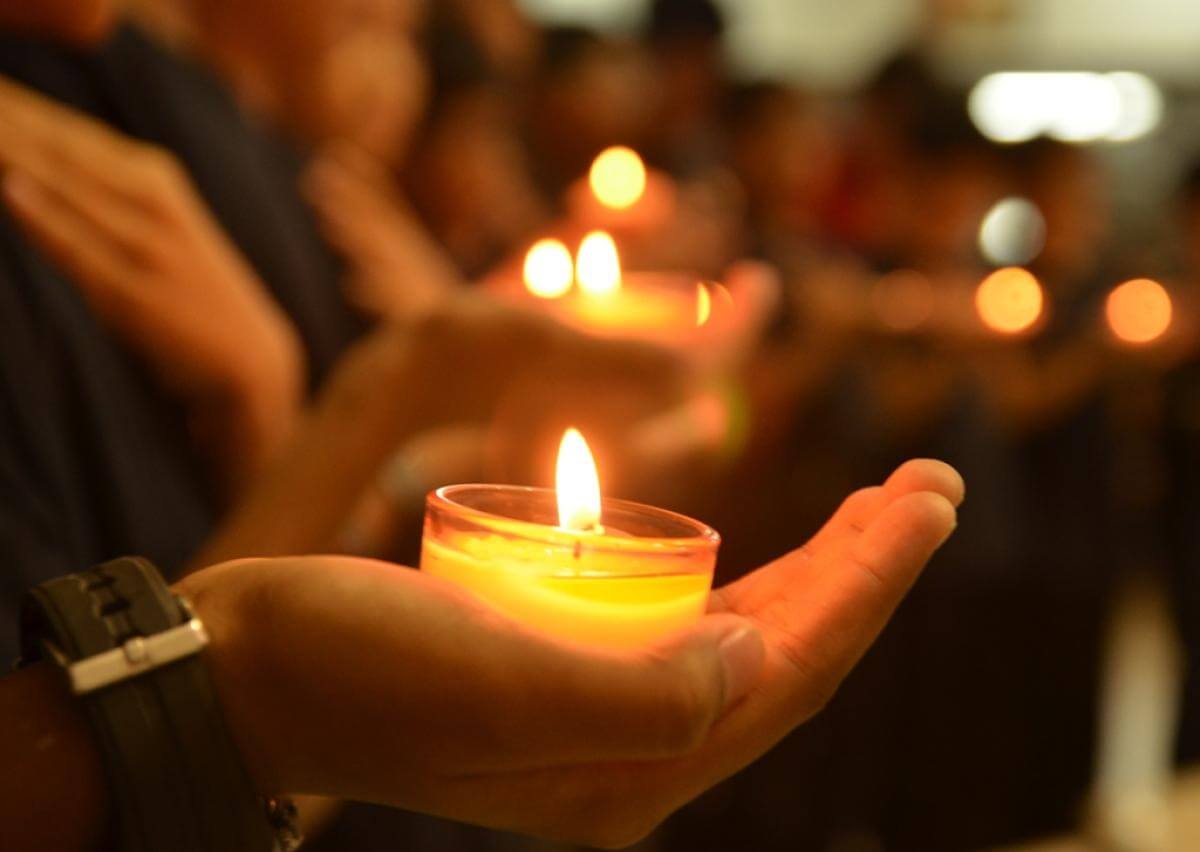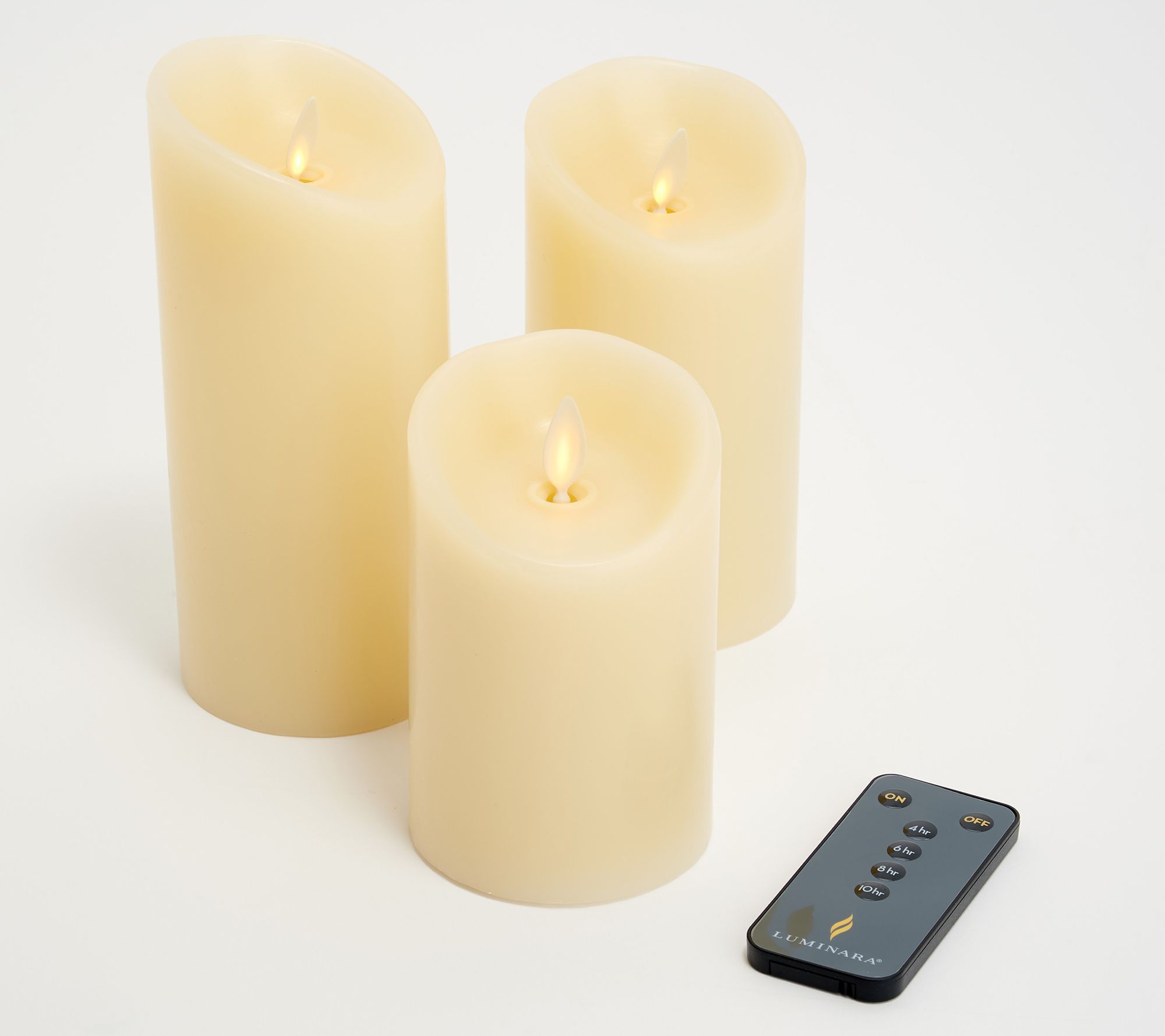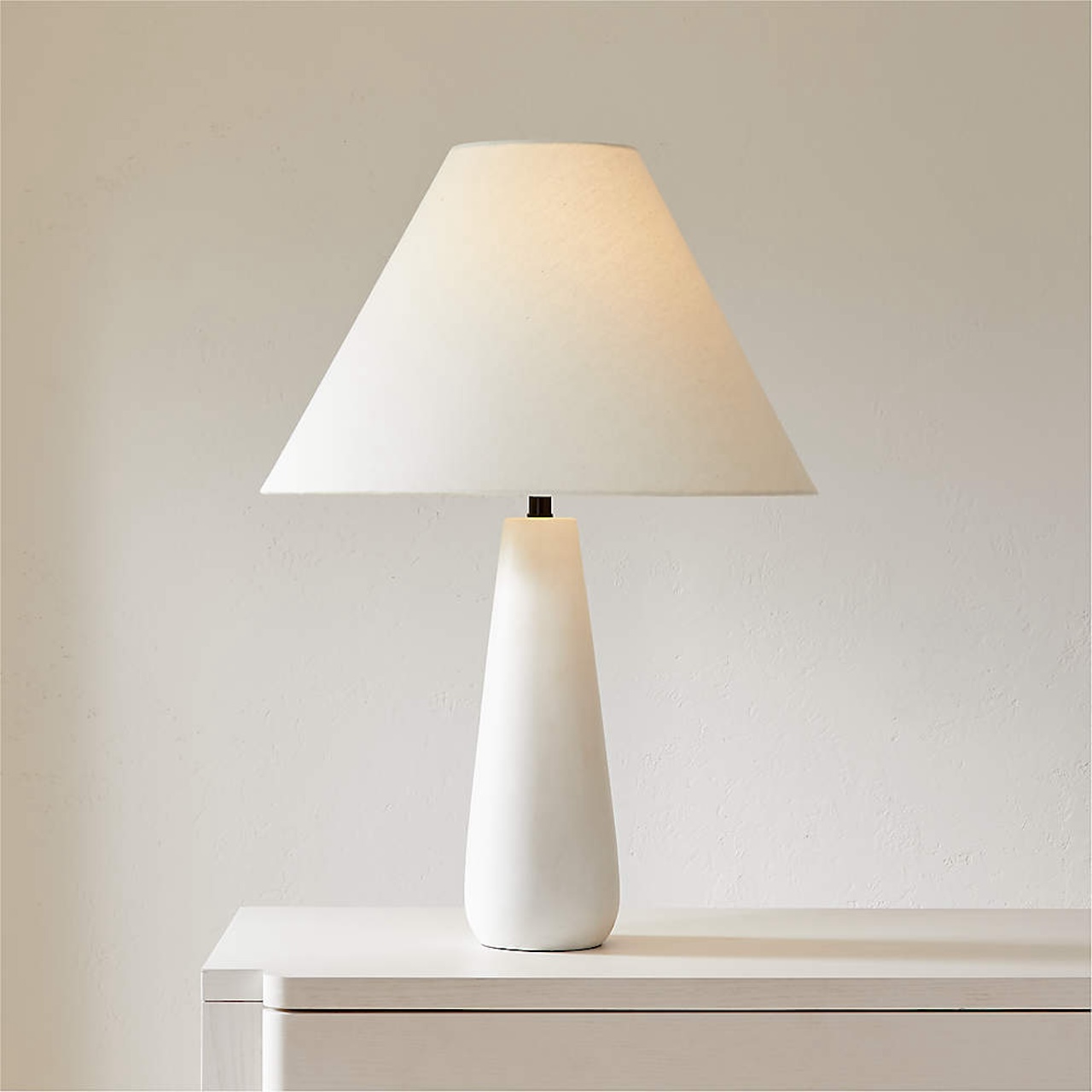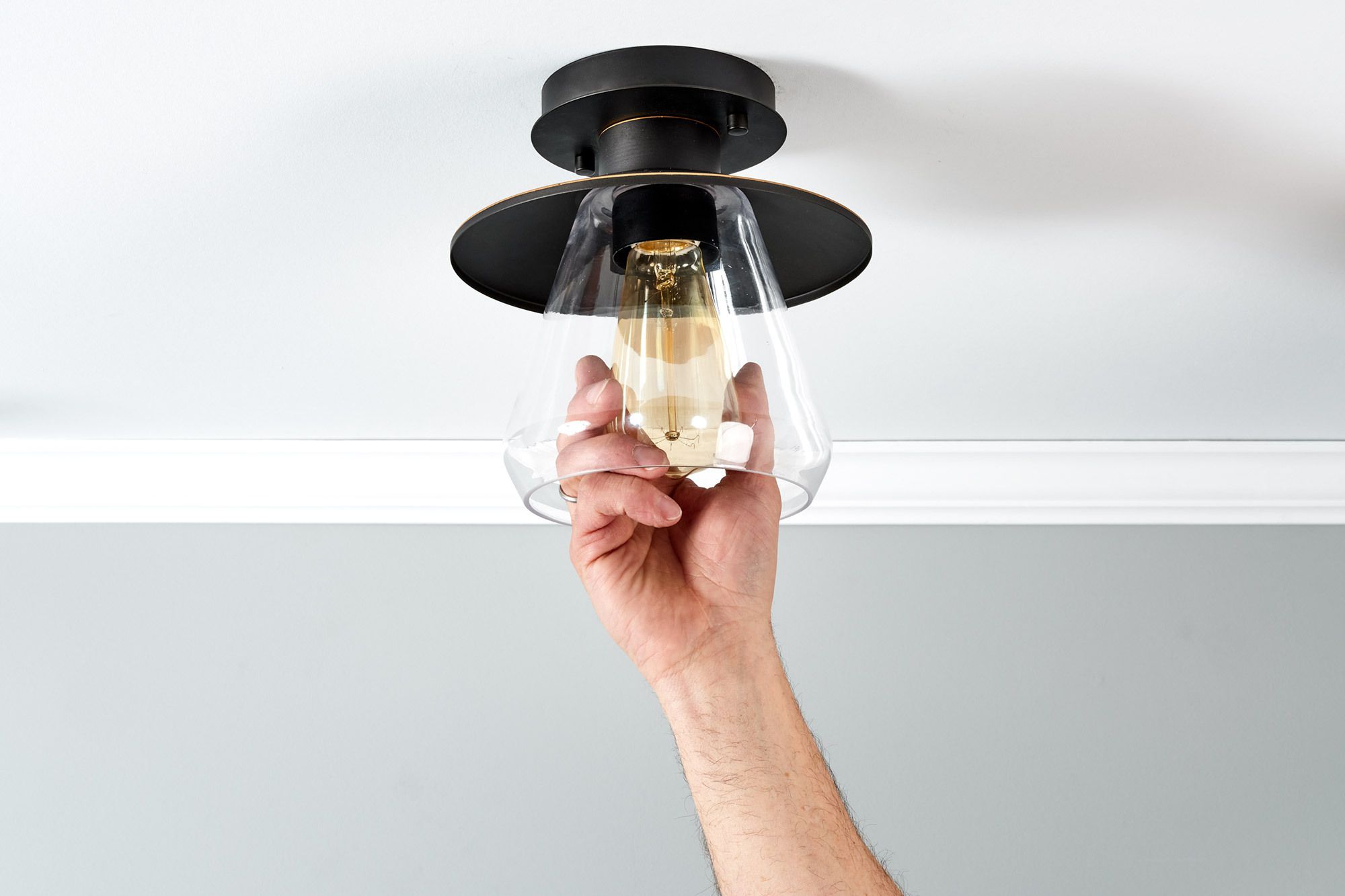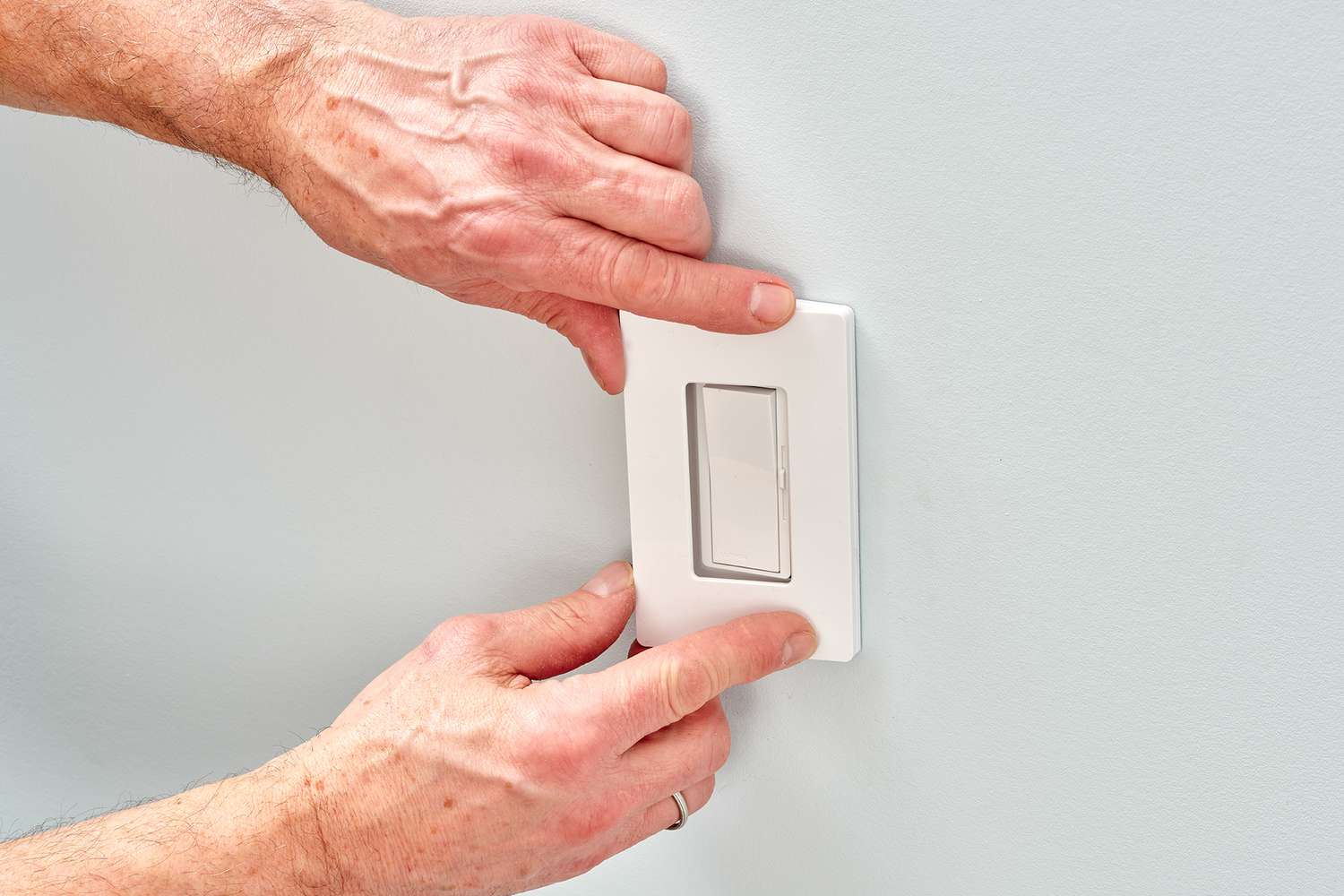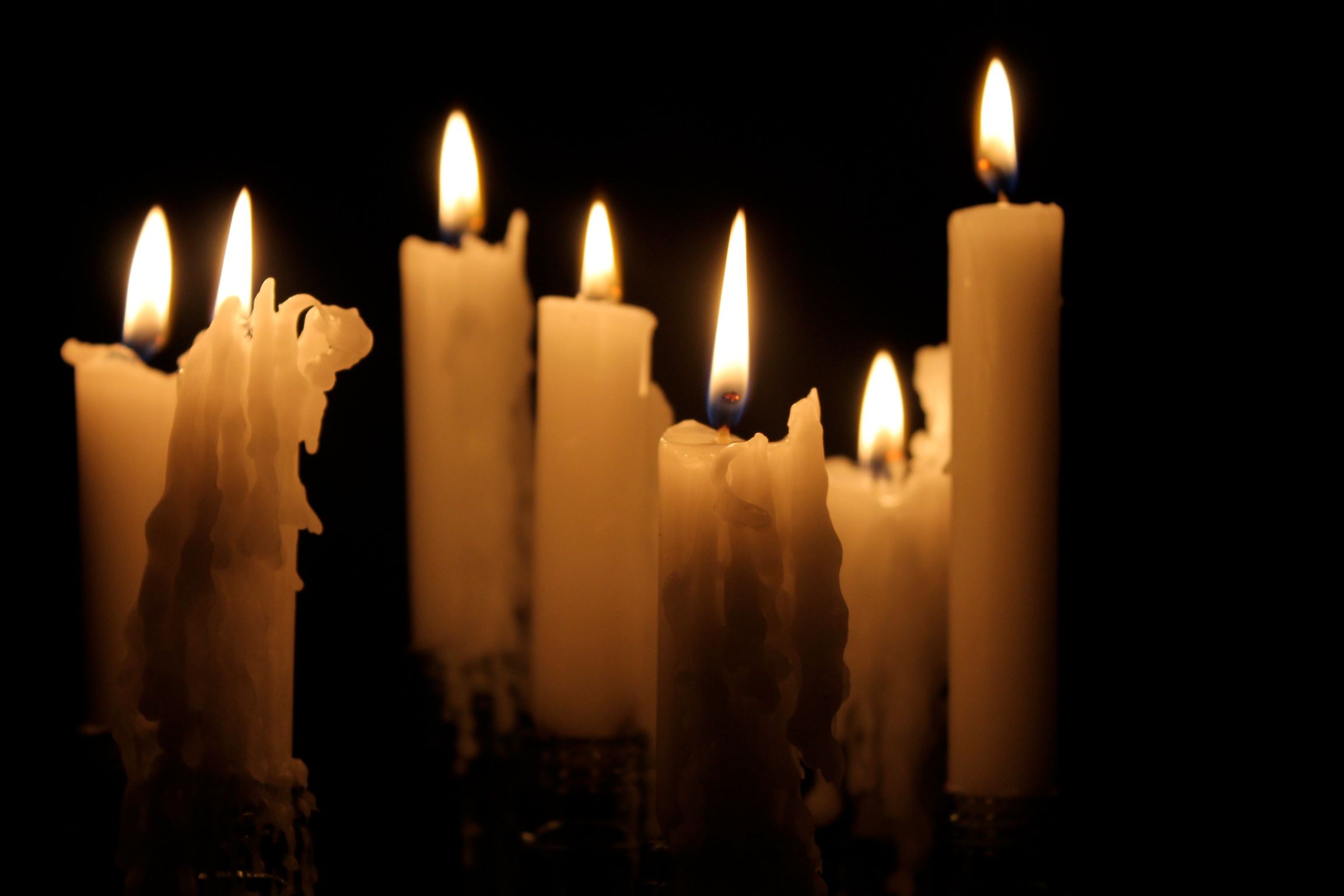

Articles
Why Do Candles Flicker
Modified: January 5, 2024
Discover the science behind why candles flicker and learn tips for preventing it. Read our informative articles on candle burning and maintenance.
(Many of the links in this article redirect to a specific reviewed product. Your purchase of these products through affiliate links helps to generate commission for Storables.com, at no extra cost. Learn more)
Introduction
There’s something mesmerizing about the flickering flame of a candle. Whether it’s the soft glow of a candlelit dinner or the comforting ambiance of a scented candle, the gentle dance of light captures our attention and creates a sense of tranquility. But have you ever wondered why candles flicker?
The flickering of a candle is not arbitrary; it’s the result of a fascinating interplay of various factors. To understand why candles flicker, we need to delve into the science of combustion and the intricate mechanisms at play.
Combustion, the process by which a substance reacts with oxygen to release energy in the form of heat and light, is the foundation of candle burning. When a lit wick is exposed to an adequate supply of oxygen, the wax near the wick melts and vaporizes. This vaporization generates highly flammable hydrocarbon gases that mix with the surrounding oxygen, creating a combustible mixture.
As the ignition temperature of the mixture is reached, the gases at the edge of the flame begin to burn. This combustion releases additional heat and light, heating up the surrounding air. The heated air rises, creating an upward flow and drawing fresh oxygen to sustain the combustion process.
Factors such as air drafts, soot formation, candle wick length and material, candle wax composition, temperature, and even the environment in which the candle is placed can all influence the flickering behavior of a candle. Each of these elements contributes to the captivating dance of the flame.
In this article, we will explore the science behind candle flickering, examining the multiple factors that influence this phenomenon. By gaining a deeper understanding of why candles flicker, we can appreciate the delicate dance of light and enhance our candle-lit experiences.
Key Takeaways:
- The mesmerizing flickering of a candle is influenced by factors such as air drafts, soot formation, wick length, wax composition, and temperature. Understanding these elements enhances our appreciation of the delicate dance of light.
- The flickering flame of a candle has a profound psychological impact, inducing relaxation, fostering mindfulness, evoking nostalgia, creating intimacy, and enhancing sleep quality. Harnessing the calming power of candlelight enriches our emotional well-being.
Read more: Why Do Candles Sweat
The Science of Combustion
At the heart of understanding why candles flicker lies the science of combustion. Combustion is a chemical reaction that occurs when a fuel source, in this case, the wax in a candle, reacts with oxygen from the air, resulting in the release of heat and light.
When a candle is lit, the heat from the flame melts the wax near the wick. The liquid wax is then drawn up the wick by capillary action, where it is vaporized by the heat of the flame. The vaporized wax combines with oxygen from the air, creating a gaseous mixture that is flammable.
Once the gaseous mixture reaches its ignition temperature, it undergoes a chemical reaction called combustion. In this process, the fuel molecules in the mixture break apart and recombine with oxygen to produce carbon dioxide, water vapor, and various other byproducts. The release of energy in the form of heat and light is what sustains the flame of the candle.
As the combustion process progresses, the heat of the flame causes the surrounding air to expand and rise. This creates an upward flow of air, known as convection, which draws in fresh oxygen to support the ongoing combustion. The continuous circulation of air maintains the supply of oxygen necessary for the flame to burn steadily.
It’s important to note that combustion is a complex process influenced by various factors, including the composition of the fuel, the availability of oxygen, and the temperature. The unique combination of these factors determines the characteristics of the flame and, in turn, the flickering behavior of the candle.
Now that we have a basic understanding of the science behind combustion, let’s explore the specific factors that contribute to the intriguing flickering of a candle.
Factors Affecting Candle Flickering
The mesmerizing flickering of a candle is influenced by several factors that contribute to the dynamic and ever-changing nature of the flame. Let’s explore some of these factors:
1. Air Drafts and Convection: Air drafts or movements in the surrounding environment can significantly impact the behavior of a candle flame. When there is a breeze or draft, it can disturb the flow of air around the flame, causing it to flicker and dance. This is because the movement of air disrupts the delicate balance of oxygen supply and heat distribution, leading to fluctuations in the flame size and shape.
2. Soot and Carbon Emissions: The combustion process in a candle can produce soot and carbon emissions. Soot is a byproduct of incomplete combustion and can accumulate on the wick and surrounding surfaces. If there is an excess buildup of soot on the wick, it can obstruct the flow of vaporized fuel gases and interfere with the flame’s stability. This can result in erratic flickering and even extinguishing of the flame.
3. Candle Wick Length and Material: The length and material of the candle wick play a crucial role in candle flickering. A longer wick tends to produce a larger flame, which is more susceptible to air drafts and fluctuations. On the other hand, a shorter wick may create a smaller, steadier flame. Additionally, the material of the wick can affect the rate at which it absorbs and transports the liquid wax, impacting the overall burn rate and flickering behavior.
4. Candle Wax Composition: The composition of the candle wax affects not only its burn time but also the flickering of the flame. Different types of waxes, such as paraffin, beeswax, soy, or palm wax, have varying densities and combustion characteristics. These variations can influence the stability and intensity of the flame, resulting in differences in flickering patterns.
5. The Role of Temperature: Temperature plays a crucial role in candle flickering. Higher temperatures can increase the volatility of the vaporized fuel gases, leading to a more intense flame and potentially more pronounced flickering. Conversely, cooler temperatures may result in a calmer and more stable flame. The ambient temperature of the room can also impact the behavior of the flame, as it determines the rate at which heat dissipates from the surroundings.
Understanding these factors gives us insight into why candles flicker and why each flame has its own unique dance. By considering these elements, we can create an environment that enhances the beauty and ambiance of the candle’s flickering flame.
Air Drafts and Convection
Air drafts and convection have a significant impact on the flickering behavior of a candle flame. The movement of air in the surrounding environment can create air currents that disrupt the delicate balance of heat and oxygen supply, causing the flame to flicker and dance.
When there is an air draft or breeze, it can disturb the flow of air around the flame. As the draft moves across the flame, it disrupts the supply of oxygen, which is essential for the combustion process. The disturbance in oxygen supply can lead to fluctuations in the flame’s size and shape, resulting in the characteristic flickering motion.
Convection, on the other hand, refers to the upward flow of hot air caused by the heat of the flame. As the air surrounding the flame is heated, it expands and becomes less dense than the cooler air above it. This creates a buoyant force that pushes the hot air upwards, drawing in fresh air from below. This continuous circulation of air supplies the flame with the necessary oxygen to sustain the combustion process.
During a convection cycle, the rising hot air carries away heat from the flame, causing it to cool down. As the flame cools, the balance between the heat generated by the combustion and the heat dissipated by convection is disrupted. This leads to a decrease in the buoyancy of the hot air and the formation of a cool down-draft. The cool down-draft brings in cooler air from the surrounding environment, which can further disrupt the flame and contribute to its flickering.
In the presence of both air drafts and convection, the behavior of the flame becomes even more dynamic. The combination of these factors creates a constantly changing environment for the flame, causing it to flicker, sway, and dance. The intensity and direction of the air drafts, as well as the strength of the convection currents, all play a role in determining the extent of the flickering motion.
To minimize the impact of air drafts and convection on candle flickering, it is advisable to place candles in areas with minimal air movement. Avoid placing candles near open windows, fans, or air conditioning vents that can create a strong draft. By creating a more stable environment, you can enjoy a calmer and less erratic flickering flame.
Air drafts and convection are essential factors to consider when trying to understand the captivating flickering of a candle flame. By appreciating the influence of these elements, we can better appreciate the delicate dance of light and enhance our candle-lit experiences.
Soot and Carbon Emissions
Soot and carbon emissions are byproducts of the combustion process in candles and can impact the flickering behavior of the flame. Understanding the role of soot and carbon emissions can help us appreciate why candles may flicker in certain circumstances.
Soot is a fine black or brown powder that is produced when there is incomplete combustion of the fuel. In the case of candles, soot forms when the carbon in the fuel does not burn completely and instead condenses onto surfaces such as the candle’s wick or the surrounding area. Excessive buildup of soot on the wick can cause the flame to flicker and can even lead to it being extinguished.
The production of soot is influenced by various factors, including the type of wax used in the candle, the quality of the wick, and the presence of unwanted impurities. For example, candles made from paraffin wax, a petroleum-based wax, are more prone to producing soot compared to candles made from cleaner-burning materials such as beeswax or soy wax.
In addition to soot, the combustion process in candles also produces carbon emissions. These emissions include carbon dioxide, a greenhouse gas responsible for climate change. While the quantity of carbon emissions from a single candle is relatively small, burning multiple candles or burning candles in poorly ventilated spaces can contribute to indoor air pollution.
The presence of soot and carbon emissions can affect the stability and intensity of the flame, leading to flickering. Excessive soot on the wick can obstruct the flow of vaporized fuel gases, making it difficult for the flame to maintain a consistent size and shape. As a result, the flame may flicker or even go out if the wick becomes heavily clogged with soot.
To minimize the production of soot and carbon emissions, it is important to choose candles made from cleaner-burning materials, such as beeswax or soy wax. These types of waxes tend to produce minimal soot and have a lower carbon footprint compared to traditional paraffin wax candles. Additionally, ensuring proper candle maintenance, such as trimming the wick and keeping the candle away from drafts, can help reduce the formation of soot and promote a more stable flame.
Understanding the impact of soot and carbon emissions on candle flickering highlights the importance of choosing environmentally-friendly candle options. By opting for cleaner-burning candles, you can enjoy the soothing ambiance of candlelight without worrying about excessive flickering or the negative effects of indoor air pollution.
Read more: Why Do Candles Pop?
Candle Wick Length and Material
The length and material of the candle wick play a crucial role in the flickering behavior of a candle flame. These factors can significantly influence how the flame burns and dances, creating unique flickering patterns and effects.
Firstly, let’s consider the length of the candle wick. The length of the wick determines the amount of fuel, or liquid wax, that is drawn up and vaporized by the heat of the flame. A longer wick will produce a larger flame, which is more susceptible to air drafts and fluctuations. This can result in more pronounced flickering and dancing of the flame. Conversely, a shorter wick tends to create a smaller, steadier flame with less flickering.
The material of the wick is another important factor. Traditionally, candle wicks were made of cotton or linen fibers. These natural materials have good capillary action, allowing the liquid wax to be drawn up the wick efficiently. Cotton wicks are still commonly used in many candles today due to their reliability and compatibility with various wax types.
However, advancements in candle technology have led to the development of wicks made from alternative materials. For example, some candles now feature wicks made of braided or twisted paper, zinc, or other metals. These wicks are designed to enhance the burn characteristics of specific waxes or to impart unique properties to the flame.
The choice of wick material can affect the rate at which the liquid wax is absorbed, transported, and vaporized. This, in turn, can influence the size and stability of the flame and, consequently, the flickering behavior. Different wick materials may burn faster or slower, produce a larger or smaller flame, or have varying resistance to bending or curling.
Additionally, some wicks are pretreated or coated with substances such as borax or other chemicals to enhance their performance. These treatments can promote a more even burning of the candle, reduce mushrooming (carbon buildup at the tip of the wick), and control the height and flickering of the flame.
To optimize the flickering behavior of a candle flame, it is crucial to choose the appropriate wick length and material for the specific candle type and desired aesthetic. Experimentation may be needed to find the perfect combination that produces the desired flickering effect.
Overall, the length and material of the candle wick are important factors in creating the captivating flickering dance of a candle flame. Whether you prefer a larger, more dynamic flickering flame or a smaller, steadier one, thoughtful consideration of the wick characteristics will help you achieve the desired ambiance and visual effect when enjoying your favorite candles.
Keep candles away from drafts to prevent flickering. Drafts can cause uneven burning and lead to flickering. Place candles in a draft-free area for a steady flame.
Candle Wax Composition
The composition of the candle wax plays a significant role in the flickering behavior of a candle flame. Different types of waxes have distinct characteristics that can influence the stability, intensity, and flickering patterns of the flame.
One commonly used wax is paraffin wax, which is derived from petroleum. Paraffin wax is known for its versatility, affordability, and availability. However, paraffin wax candles tend to produce more soot and have a higher melting point compared to other types of waxes. This can result in a more erratic flickering pattern and a potentially shorter burn time. The presence of impurities in paraffin wax can also contribute to uneven burning and increased soot production.
Beeswax is another popular choice for candles. Beeswax is a natural wax produced by bees and is known for its clean-burning properties and subtle honey-like scent. Beeswax candles tend to have a higher melting point, which can result in a slower burn rate and a more controlled flickering motion. The stability and lower soot production of beeswax make these candles a preferred option for those seeking a more serene and long-lasting experience.
Soy wax is a plant-based alternative to traditional waxes. Derived from soybean oil, soy wax is biodegradable, renewable, and eco-friendly. Soy wax candles have a lower melting point than paraffin wax, which can contribute to a longer burn time and a more controlled flickering flame. Additionally, soy wax has minimal soot production, resulting in cleaner, healthier burning candles.
Palm wax is another natural wax option that is gaining popularity. Obtained from palm oil, palm wax has a unique crystalline structure that can create intriguing patterns and textures in the candle. Palm wax has a lower melting point than paraffin wax, allowing for a longer burn time and a more controlled flickering motion. However, it’s important to ensure that the palm oil used in the production of palm wax is sourced sustainably and does not contribute to deforestation or harm to the environment.
The choice of candle wax composition ultimately depends on personal preferences, environmental considerations, and desired visual effects. Each type of wax has its own distinct properties, burning characteristics, and impact on the flickering of the flame.
When selecting candles, it’s important to consider the composition of the wax to create the desired flickering experience. Whether you prefer the versatility of paraffin wax, the elegance of beeswax, the sustainability of soy wax, or the unique texture of palm wax, understanding the different wax options will help you choose candles that beautifully flicker and enhance the ambiance of your space.
The Role of Temperature
The temperature of the surrounding environment and the candle itself plays a vital role in the flickering behavior of a candle flame. Changes in temperature can create fluctuations in the combustion process, resulting in variations in the intensity and flickering patterns of the flame.
Temperature influences the behavior of a candle flame in several ways. Firstly, the ambient temperature of the room affects the burn rate of the candle. Higher temperatures can increase the volatility of the vaporized fuel gases, leading to a more intense flame and potentially more pronounced flickering. Conversely, cooler temperatures may result in a calmer and more stable flame with less flickering.
The temperature of the candle itself is also crucial. As the flame burns, it generates heat that is transferred to the surrounding wax. If the temperature of the wax is too low, it may not vaporize efficiently, leading to an uneven and less stable flame. On the other hand, if the temperature of the wax is too high, it can contribute to rapid fuel consumption and a more turbulent flame, which can result in increased flickering.
The size and shape of the flame are also influenced by temperature. A higher temperature can lead to a larger flame, which is more susceptible to air drafts and fluctuations. This can result in more pronounced flickering and dancing of the flame. Conversely, a lower temperature may produce a smaller, steadier flame with less flickering.
It’s important to note that temperature does not only refer to the air temperature but also to the heat generated by nearby objects or sources. Placing a candle near a heat source or in a warmer area of the room can increase the overall temperature of the candle, potentially affecting its flickering behavior.
To optimize the flickering effect and stability of a candle flame, it is essential to consider and regulate the temperature of the environment and the candle itself. Avoid placing candles in direct sunlight or near sources of heat, as this can lead to excessive flickering or even the premature melting of the wax. Additionally, maintaining a consistent room temperature can help create a more stable burning environment for the candle.
Understanding the role of temperature in candle flickering allows us to create the desired ambiance and visual effects. By carefully managing the temperature, we can enhance the soothing and captivating presence of candlelight in our spaces.
Candle Flickering in Different Environments
The flickering behavior of a candle flame can vary depending on the environment in which it is placed. Factors such as humidity, air pressure, and the presence of nearby objects or surfaces can influence the stability and patterns of the flame’s flickering.
Humidity levels in the environment can affect the flickering of a candle flame. High humidity can cause the air to become saturated with moisture, making it more difficult for the combustion process to occur efficiently. This can result in a subdued flame with less flickering. On the other hand, low humidity can promote a drier environment, facilitating the combustion process and potentially leading to a more active and flickering flame.
Air pressure is another environmental factor that can impact candle flickering. Changes in air pressure, such as those caused by weather patterns or the opening and closing of doors or windows, can create air currents and drafts that disturb the flame. For example, when a door is opened, it can create a rush of air that causes the flame to flicker or even extinguishes it temporarily. Similarly, changes in air pressure can alter the flow of oxygen to the flame, affecting its stability and flickering patterns.
The presence of nearby objects or surfaces can also affect candle flickering. Placing a candle near a wall, shelf, or any other object can create turbulence in the air around the flame, resulting in a more turbulent and flickering flame. Objects that reflect or concentrate heat, such as mirrors or glass surfaces, can also impact the flickering behavior by altering the heat distribution and airflow around the flame.
The size and shape of the room or space can influence candle flickering as well. Larger rooms with higher ceilings may have more air movement, which can contribute to increased flickering. Additionally, rooms with open layouts or high air circulation from fans or air conditioning systems may create more air drafts, leading to a more active and flickering flame.
The materials used in the construction of the room can also play a role. For example, rooms with carpeted floors or upholstered furniture may have higher levels of static electricity, which can affect the flame’s behavior and potentially cause more flickering.
It’s important to note that the flickering of a candle flame in various environments can add to the charm and ambiance of the space. However, to ensure safety, it’s crucial to be cautious when placing candles in potentially hazardous locations or near flammable objects.
Understanding how different environments can impact candle flickering allows us to appreciate the dynamic nature of candlelight and create the desired mood and atmosphere in our living spaces.
Read more: Why Is My Chandelier Flickering
The Psychological Effect of Candle Flickering
The flickering flame of a candle can have a profound psychological effect on humans, evoking feelings of calmness, relaxation, and tranquility. The gentle dance of light and the warm ambiance created by candlelight can help create a soothing and peaceful environment, both for solitary moments and social gatherings.
One of the primary psychological effects of candle flickering is its ability to induce a sense of relaxation and reduce stress. As we gaze at the gentle, rhythmic movement of the flame, our focus shifts from the worries and distractions of everyday life. This visual stimulation can activate our parasympathetic nervous system, which is responsible for promoting rest and relaxation. As a result, we experience a release of tension, a reduction in anxiety, and an overall sense of calm.
Candle flickering also has the power to create a meditative atmosphere. As we watch the flickering flame, our attention becomes absorbed in its gentle movements. This visual stimulus can help slow down our racing thoughts and bring us into a state of mindfulness. The repetitive and rhythmic nature of the flame’s flickering can serve as a focal point for meditation, allowing us to be fully present in the moment and cultivate a sense of inner peace.
In addition to relaxation and mindfulness, candle flickering can evoke a sense of nostalgia and warmth. The soft glow and dancing shadows created by the flame can take us back to cherished memories of cozy nights by the fireplace or candlelit dinners with loved ones. These associations with positive experiences can enhance our mood and create a comforting and welcoming ambiance.
The psychological impact of candle flickering is not limited to relaxation and nostalgia. The visual stimulation of the flame can also foster a sense of intimacy and connection. Candlelight has long been associated with romantic settings, as it creates a cozy and intimate atmosphere. The flickering flame can soften the lighting, making faces appear more radiant and creating an inviting space for open and meaningful conversations.
Moreover, candle flickering can positively influence our sleep patterns. Many people find it easier to fall asleep with the soft glow of a candle nearby. The steady, rhythmic flickering can mimic the natural lighting changes of twilight, signaling to our brain that it is time to unwind and prepare for rest. This can help regulate our circadian rhythm and promote a more peaceful and restorative sleep.
Overall, the psychological effect of candle flickering is multi-faceted and powerful. It has the ability to induce relaxation, foster mindfulness, evoke nostalgia, create intimacy, and enhance sleep quality. By harnessing the calming and soothing power of candlelight, we can create an environment that promotes well-being and enriches our emotional state.
Conclusion
The flickering of a candle flame is a captivating phenomenon that combines the beauty of light and the science of combustion. Through an exploration of various factors, we have gained a deeper understanding of why candles flicker.
We have learned that the science of combustion, the interplay of wax composition, wick length and material, and the influence of temperature all contribute to the unique flickering patterns of a candle flame. Factors such as air drafts, soot formation, and the surrounding environment also play important roles in shaping the dance of the flame.
Air drafts and convection can cause the flame to sway and dance, while the presence of soot and carbon emissions can impact its stability. The length and material of the wick can dictate the size and intensity of the flame, while the composition of the wax can affect burn time and flickering behavior. Temperature, both ambient and within the candle itself, determines the overall dynamics of the flame.
Furthermore, the surrounding environment, humidity, air pressure, and the presence of objects or surfaces can all influence the flickering patterns of the flame. These factors interact in complex ways, creating a dynamic and ever-changing dance of light.
Beyond the scientific understanding, the flickering flame of a candle has a profound psychological effect on us. It induces relaxation, promotes mindfulness, evokes nostalgia, creates intimacy, and enhances sleep. The gentle flickering of the flame can transport us to a state of tranquility and help create a serene atmosphere in our homes or during social gatherings.
In conclusion, the flickering of a candle flame is a mesmerizing and multi-faceted phenomenon. It is a beautiful blend of science and psychology that enriches our lives in various ways. By understanding the factors that contribute to candle flickering, we can enhance our experiences with candles and harness their soothing and calming effects to create a warm and inviting atmosphere.
So, the next time you light a candle and immerse yourself in the serene dance of light, take a moment to appreciate the intricate interplay of science, ambiance, and emotion that make candles flicker.
Frequently Asked Questions about Why Do Candles Flicker
Was this page helpful?
At Storables.com, we guarantee accurate and reliable information. Our content, validated by Expert Board Contributors, is crafted following stringent Editorial Policies. We're committed to providing you with well-researched, expert-backed insights for all your informational needs.

